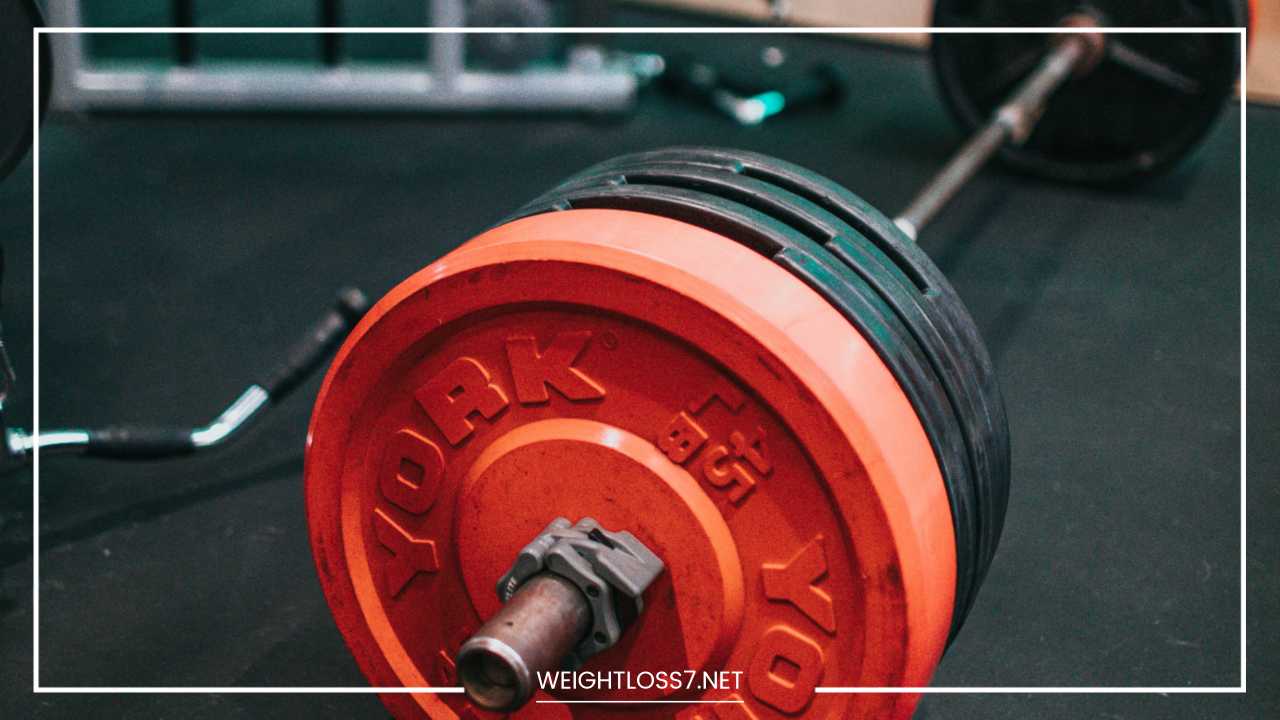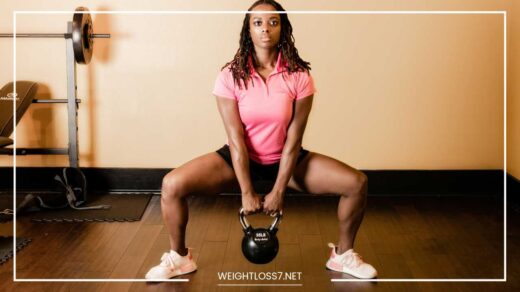Ask the Doctor: Best Way to Work Out

Best Way to Work Out
A Comprehensive Guide to Fitness and Health
When people ask, “What’s the best way to work out?” they are usually hoping for a simple, clear-cut answer.
However, fitness is not a one-size-fits-all endeavor—what works for one person may not work for another.
Your workout routine should be tailored to your unique goals, physical condition, lifestyle, and preferences.
Factors like age, health status, and even your personal interests play a significant role in shaping the best exercise plan for you.
While there’s no universal answer to the question of “the best workout,” understanding the key principles of fitness and how to apply them to your life can help you achieve your goals safely and effectively.
This guide will provide you with the foundational knowledge needed to create a workout plan that suits your body and goals, while also highlighting the importance of seeking professional guidance, if necessary.
Consulting Your Doctor: Your First Step
Before beginning any new workout regimen, particularly if you have underlying health conditions or are new to exercise, it is essential to consult with your doctor.
Your healthcare provider can assess your overall health, identify potential risks, and offer personalized recommendations based on your unique health profile.
This step is particularly crucial for individuals with chronic conditions such as heart disease, diabetes, arthritis, or obesity, as certain forms of exercise may need to be modified to prevent injury or strain.
Your doctor can help you understand which exercises are safe and effective for you, taking into account factors such as blood pressure, joint health, and cardiovascular fitness.
If you’re pregnant or recovering from surgery or illness, your doctor can also guide you in creating a workout plan that supports your specific recovery process.
For those who are new to working out or haven’t exercised in a while, a consultation can provide valuable peace of mind, ensuring that you’re starting with a safe and sustainable plan.
Understanding Your Fitness Goals
One of the first questions you should ask yourself when designing a workout routine is: What are my fitness goals?
Your goals will dictate the type of exercises you should focus on, the intensity of your workouts, and the frequency with which you exercise.
There are many potential fitness goals, but the most common ones fall into the following categories:
- Weight Loss: If you are looking to lose weight, a combination of cardiovascular exercise (for fat burning) and strength training (for muscle building and boosting metabolism) is typically the most effective. Cardiovascular exercises, such as walking, running, cycling, or swimming, will help you burn calories, while strength training exercises will help you build lean muscle, which increases your resting metabolic rate and helps you burn more calories even at rest.
- Muscle Building: If building muscle is your primary goal, strength training should be your focus. Progressive overload (gradually increasing the weight or resistance) is key to muscle growth. In addition to lifting weights, exercises such as resistance band workouts, bodyweight exercises (e.g., push-ups, squats, lunges), and machines can help you build muscle and strength.
- Cardiovascular Health: For individuals aiming to improve cardiovascular health or endurance, exercises like running, cycling, swimming, rowing, or brisk walking are essential. Cardiovascular exercises strengthen the heart and lungs, improve circulation, and can lower the risk of chronic diseases like hypertension, diabetes, and heart disease.
- Overall Fitness: For people who simply want to be more physically active, a balanced workout plan that includes a mix of cardiovascular exercise, strength training, and flexibility work is the best approach. A well-rounded routine helps improve general health, increases energy levels, enhances mental well-being, and reduces the risk of injury.
It’s important to remember that these goals aren’t mutually exclusive. Many people will find that their fitness journey involves a combination of goals.
For example, you may be interested in building strength while also working to improve your cardiovascular fitness.
The key is to prioritize what is most important to you and then structure your workout plan accordingly.
Creating a Balanced Workout Routine
A well-rounded fitness routine should address multiple aspects of physical health, and should ideally include the following components:
- Cardiovascular Exercise: Cardiovascular exercise, also known as aerobic exercise, improves the efficiency of your heart and lungs. It helps with weight loss, boosts mood, and increases overall endurance. The general guideline is to aim for at least 150 minutes of moderate-intensity cardio, or 75 minutes of vigorous-intensity cardio per week. Examples include brisk walking, jogging, cycling, swimming, and dancing.
- Strength Training: Strength training not only builds muscle but also strengthens your bones, improves your metabolism, and enhances overall functional fitness. Resistance exercises can be done with free weights, resistance bands, bodyweight exercises, or weight machines. Aim for two strength training sessions per week, targeting all major muscle groups (e.g., legs, back, chest, shoulders, arms, and core).
- Flexibility and Balance Exercises: Flexibility exercises improve the range of motion of your joints, reducing the risk of injury and increasing mobility. Balance training can also help improve coordination and stability, which is especially important as we age. Activities like yoga, Pilates, and simple static stretches are all effective ways to incorporate flexibility and balance into your workout routine. It’s recommended to engage in flexibility and balance exercises at least two to three times per week.
A balanced workout routine should also take into account the need for adequate rest and recovery. While exercise is essential for building strength, endurance, and flexibility, rest days are necessary to allow the body to recover, rebuild muscle tissue, and restore energy levels.
Tips for Effective Workouts
Achieving your fitness goals is not just about following a workout plan—it’s about working out in an efficient, safe, and sustainable way. Here are some tips to help you maximize the effectiveness of your workouts:
- Warm-Up Properly: A proper warm-up prepares your body for physical activity by increasing blood flow to your muscles and improving flexibility. A warm-up can be as simple as 5–10 minutes of light cardio, such as walking, cycling, or jogging, followed by dynamic stretches (e.g., arm circles, leg swings). This helps reduce the risk of injury and improves performance during your workout.
- Cool Down and Stretch: After completing your workout, don’t skip the cool-down. A 5–10 minute cool-down, including slow cardio and static stretches, allows your heart rate to return to normal and helps relax tight muscles. Stretching improves flexibility and range of motion and aids in the recovery process by reducing muscle stiffness and soreness.
- Focus on Form: Whether you are lifting weights, doing bodyweight exercises, or running, maintaining proper form is essential to prevent injury and maximize the benefits of each movement. If you’re unsure about your form, consider consulting a personal trainer to ensure you’re performing exercises correctly. Additionally, working with a trainer can help you develop a personalized plan that aligns with your goals and fitness level.
- Progressive Overload: To continually improve, you need to challenge your body. Progressive overload involves gradually increasing the intensity of your workouts by adding more weight, reps, sets, or workout duration. This helps stimulate muscle growth, increases endurance, and prevents plateaus.
- Listen to Your Body: Pay attention to how your body feels during and after exercise. Pushing through pain or discomfort can lead to injuries and setbacks. If you feel persistent pain or discomfort, it’s important to rest and seek medical advice if needed. Also, take rest days to give your muscles time to recover.
- Hydration: Dehydration can lead to fatigue, decreased performance, and muscle cramps. Drink water before, during, and after exercise to stay hydrated. The amount of water you need will vary depending on the intensity and duration of your workout, as well as environmental factors like temperature and humidity.
- Nutrition: Proper nutrition supports your workout efforts and helps your body recover faster. A balanced diet rich in whole foods—including lean protein, complex carbohydrates, healthy fats, fruits, and vegetables—will provide the fuel and nutrients you need. Protein is especially important for muscle repair and growth, while carbohydrates replenish glycogen stores to keep your energy levels high during workouts.
- Rest and Sleep: Adequate rest and sleep are essential for muscle recovery and performance. During sleep, the body repairs muscle tissue and restores energy levels. Aim for 7–9 hours of sleep per night, and take rest days from exercise as needed to avoid overtraining.
Common Workout Mistakes to Avoid
While embarking on your fitness journey, it’s easy to fall into some common traps that can hinder progress or cause injury. Here are some workout mistakes to avoid:
- Overtraining: Exercising too frequently or at too high an intensity without proper rest can lead to burnout, fatigue, and injury. It’s essential to balance hard training sessions with rest days to give your muscles and nervous system time to recover.
- Poor Form: Lifting weights or performing exercises with improper form is a common cause of injury. It’s important to focus on executing each movement correctly to prevent strain on your joints and muscles. Consider starting with lighter weights or slower movements until you feel confident in your technique.
- Neglecting Flexibility and Balance: Many people focus only on strength or cardio, neglecting flexibility and balance exercises. These are essential for reducing the risk of injury and maintaining joint health. Incorporate stretching, yoga, or Pilates into your weekly routine.
- Skipping Warm-ups and Cool-downs: A proper warm-up and cool-down are crucial for preventing injury and improving recovery. Never skip these steps, even if you’re short on time.
- Not Varying Your Routine: Sticking to the same exercises and intensity levels can lead to boredom and plateaus. Mixing up your routine with different exercises, training methods, and workout types will keep your body challenged and prevent stagnation.
Sample Workout Plans for Different Levels
Beginner Workout Plan:
If you’re new to exercise or returning after a long break, start with a simple plan that gradually builds your fitness level. Focus on mastering basic movements and building consistency.
- Monday: 30 minutes of brisk walking or light jogging
- Wednesday: Full-body strength workout (bodyweight exercises: squats, lunges, push-ups, planks)
- Friday: Yoga or Pilates (30 minutes of stretching and core work)
Intermediate Workout Plan:
For those who have been exercising regularly for several months, you can increase the intensity and incorporate more challenging exercises.
- Monday: 45 minutes of moderate-intensity cardio (running or cycling)
- Wednesday: Strength training (3 sets of 10-12 reps: squats, lunges, bench press, rows)
- Friday: Cross-training (30 minutes of swimming or HIIT workout)
Advanced Workout Plan:
Advanced exercisers should focus on more complex movements, higher intensity, and additional volume for muscle growth and endurance.
- Monday: Strength training (4 sets of 8-12 reps: squats, deadlifts, bench press, overhead press)
- Wednesday: 60 minutes of high-intensity interval training (HIIT) or hill sprints
- Friday: Flexibility and balance training (advanced yoga or Pilates for 30 minutes)
Final Thoughts
The “best way to work out” is a deeply personal journey that depends on your goals, body, and lifestyle.
By focusing on the basics of a balanced workout routine, incorporating sound principles like progressive overload, proper nutrition, and recovery, and avoiding common mistakes, you can build a fitness plan that works for you.
Remember that fitness is a long-term commitment, and the most effective workout is one that you can sustain over time.
With consistency, patience, and guidance from health professionals, you can achieve lasting results that improve not only your physical health but also your mental well-being.

















